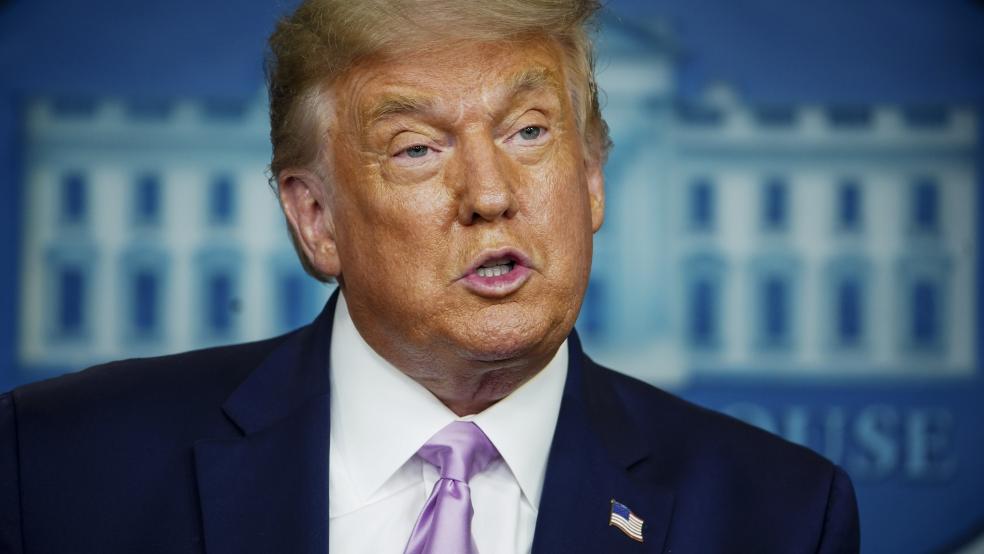From the moment President Trump unveiled unilateral actions that he claimed would provide economic relief to those hurt by the coronavirus pandemic, there were questions about just how effective those moves would be. Ten days later, two of the key steps Trump announced are running into some stiff resistance.
Business groups warn about Trump’s payroll tax plan: More than 30 industry associations and business groups — including the U.S. Chamber of Commerce, the National Retail Federation, the National Association of Manufacturers and the National Restaurant Association — warned Tuesday that many employers won’t take part in Trump’s plan to defer employee payroll taxes through the end of the year.
In a letter to House Speaker Nancy Pelosi, Senate Majority Leader Mitch McConnell and Treasury Secretary Steven Mnuchin, the groups said that Trump’s suspension of the payroll tax could leave workers facing large tax bills once the deferral ends in 2021. A worker earning $35,000 would see an $83.46 boost per pay period, they wrote, but could then owe $751 in deferred taxes. Someone earning $75,000 would get a $178.85 boost in every paycheck, but could face a $1,609 tax hit in 2021.
Trump has said he will push to have those taxes permanently forgiven, but that would require an act of Congress. Lawmakers in both parties have expressed concerns about a payroll tax cut and it’s not clear how likely lawmakers might be to ultimately forgive any deferred taxes.
“Many of our members consider it unfair to employees to make a decision that would force a big tax bill on them next year,” the business groups wrote. “It would also be unworkable to implement a system where employees make this decision. Therefore, many of our members will likely decline to implement deferral, choosing instead to continue to withhold and remit to the government the payroll taxes required by law.”
States hesitant on Trump’s unemployment payments: Trump said his plan would provide $400 a week in supplemental benefits covering lost wages, but $100 of that was required to come from the states, a structure that drew complaints about the costs being imposed and the complexity of setting up a new payment system. In the end, the Trump administration said that the federal government would pay a fixed $300 and states could choose whether to add another $100 or not. Still, the Trump plan “has found little traction,” the Associated Press reports based on a survey of states:
“[A]s of Monday, 18 states have said they will take the federal grants allowing them to increase unemployment checks by $300 or $400 a week. The AP tally shows that 30 states have said they’re still evaluating the offer or have not said whether they plan to accept the president’s slimmed-down benefits. Two have said no.”
The AP reports that most states that have signed on to the program have chosen the $300 option, but even once they’ve agreed to take part, states still face implementation issues:
“New Mexico was the first state to apply for the aid last week and one of the first to be announced as a recipient by the Federal Emergency Management Agency. But Bill McCamley, secretary of the state’s Department of Workforce Solutions, said it’s not clear when the money will start going out, largely because the state needs to reprogram benefit distribution systems to make it work.”





